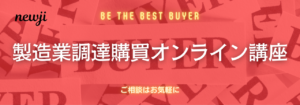- お役立ち記事
- Manufacturing Process of Bottles and Processing Methods

Manufacturing Process of Bottles and Processing Methods

The manufacturing process of bottles involves several distinct steps designed to create durable, high-quality containers.
These steps begin with raw materials and end with the finishing touches that make bottles ready for use.
Understanding these processes not only gives us insight into how everyday items are made but also helps us appreciate the intricacies involved.
目次
Raw Materials for Bottle Manufacturing
The primary material used in bottle manufacturing varies depending on the type of bottle being produced.
For glass bottles, the main ingredients include sand, soda ash, and limestone.
Plastic bottles, on the other hand, are typically made from polyethylene terephthalate (PET) or high-density polyethylene (HDPE).
Recycled materials are also becoming increasingly popular in bottle production due to environmental concerns.
Collecting and Preparing Raw Materials
Before manufacturing can begin, the raw materials must be sourced and refined.
Sand for glass bottles is usually gathered from quarries and sieved to remove impurities.
For plastic bottles, the raw polymers are often delivered in the form of pellets or flakes.
Recycled materials undergo a cleaning and shredding process to ensure they are free from contaminants.
The Manufacturing Process of Glass Bottles
The production of glass bottles involves several steps, each crucial for creating a sturdy end product.
Batching
This initial stage involves mixing the raw materials (sand, soda ash, and limestone) in precise proportions.
The mixture is then transferred to a furnace for melting.
Melting
The raw material mixture is melted at extremely high temperatures, typically around 1,700 degrees Celsius.
The result is a molten glass, which is then conditioned to the appropriate viscosity for bottle forming.
Forming
Two main methods are used to form glass bottles: the blow-and-blow method and the press-and-blow method.
Both involve shaping the molten glass into a parison (a rough preform shape).
This parison is then blown into a mold to create the final bottle shape.
Annealing
Newly formed glass bottles undergo a process called annealing, where they are slowly cooled in a controlled manner.
This process relieves internal stresses and improves the bottle’s durability.
Inspection and Packaging
Finally, each bottle is inspected for quality.
Advanced technologies, including computerized vision systems, are often used to detect defects.
Bottles that pass inspection are packaged for shipment.
The Manufacturing Process of Plastic Bottles
Plastic bottles are produced through a slightly different set of procedures, but the goal remains the same: to create a robust, functional container.
Injection Molding
The first step involves melting plastic pellets and injecting them into a mold to form a preform.
This preform resembles a test tube and serves as the basis for the final bottle shape.
Blow Molding
The preform is then heated and placed into a bottle mold.
A blow mold machine injects air into the preform, causing it to expand and take the shape of the mold.
This method can be further divided into extrusion blow molding and injection blow molding, depending on the specifics of the equipment used.
Cooling and Ejecting
Once the bottle has taken shape, it is cooled rapidly to set its structure.
The finished bottle is then ejected from the mold, ready for the next stage.
Trimming and Inspection
Any excess plastic from the molding process is trimmed away.
Similar to glass bottles, plastic bottles undergo a rigorous inspection for defects.
This includes checking for leaks, inconsistencies in thickness, and other flaws.
Recycling and Sustainability
In recent years, there has been a growing focus on the environmental impact of bottle manufacturing.
Recycling programs aim to reduce waste and produce new bottles from recycled materials, significantly cutting down on resource use.
Recycling Glass Bottles
Recycled glass is known as cullet.
Cullet can be added to the raw material mix, replacing a portion of the virgin materials.
This reduces the energy needed for melting and helps conserve natural resources.
Recycling Plastic Bottles
The process for recycling plastic involves collecting used bottles, cleaning them, and shredding them into small flakes.
These flakes are melted and reformed into pellets, which can then be used to create new bottles or other plastic products.
Advanced Technological Innovations
Technology has revolutionized the bottle manufacturing industry, making processes more efficient and sustainable.
Automation
Many factories now utilize automated systems for batching, melting, forming, and inspecting bottles.
Automation not only speeds up production but also improves consistency and reduces waste.
3D Printing
3D printing technology is beginning to make its way into bottle manufacturing.
It allows for rapid prototyping and the creation of complex mold designs, further enhancing the capability for innovation.
Biodegradable Materials
Researchers are developing biodegradable materials that can replace traditional plastics.
These new materials promise to reduce the environmental footprint of bottle manufacturing significantly.
Understanding the manufacturing process of bottles and the various methods involved gives us a deeper appreciation for these ubiquitous items.
From the raw materials to the final product, numerous steps and technologies ensure that each bottle is made to high standards.
As we move forward, advancements in recycling and sustainability will play a critical role in shaping the future of bottle manufacturing.
 資料ダウンロード
資料ダウンロード
QCD管理受発注クラウド「newji」は、受発注部門で必要なQCD管理全てを備えた、現場特化型兼クラウド型の今世紀最高の受発注管理システムとなります。
 NEWJI DX
NEWJI DX
製造業に特化したデジタルトランスフォーメーション(DX)の実現を目指す請負開発型のコンサルティングサービスです。AI、iPaaS、および先端の技術を駆使して、製造プロセスの効率化、業務効率化、チームワーク強化、コスト削減、品質向上を実現します。このサービスは、製造業の課題を深く理解し、それに対する最適なデジタルソリューションを提供することで、企業が持続的な成長とイノベーションを達成できるようサポートします。
 製造業ニュース解説
製造業ニュース解説
製造業、主に購買・調達部門にお勤めの方々に向けた情報を配信しております。
新任の方やベテランの方、管理職を対象とした幅広いコンテンツをご用意しております。
 お問い合わせ
お問い合わせ
コストダウンが利益に直結する術だと理解していても、なかなか前に進めることができない状況。そんな時は、newjiのコストダウン自動化機能で大きく利益貢献しよう!
(β版非公開)






